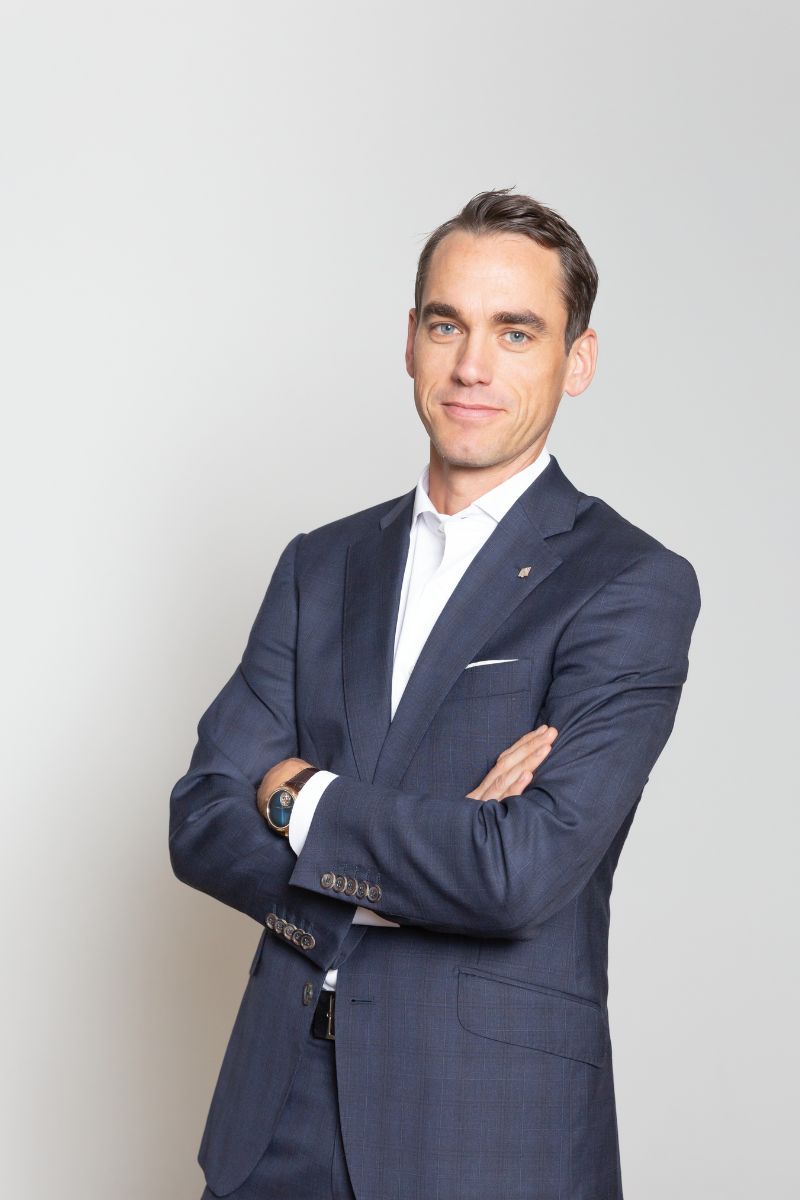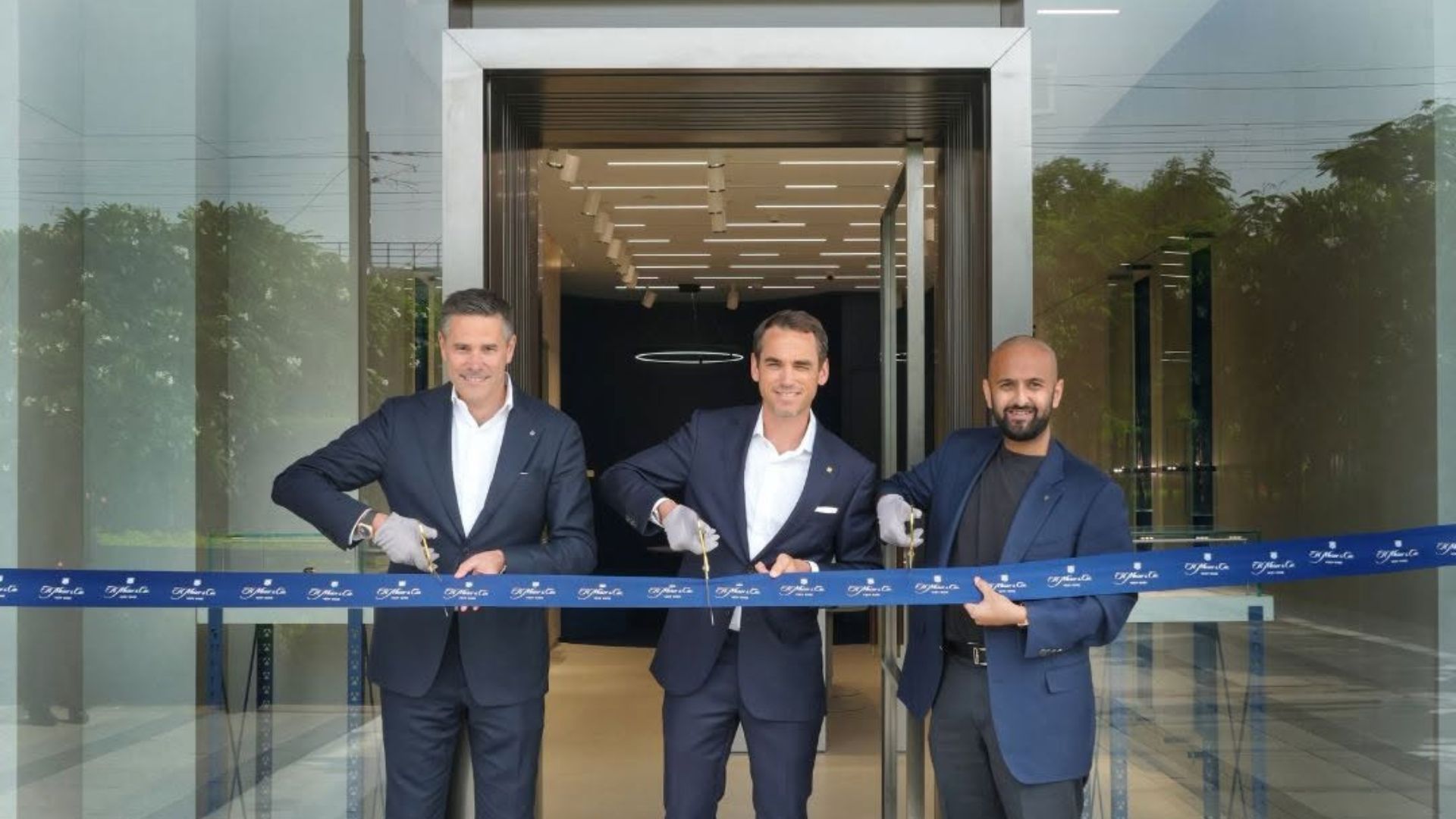In a luxury landscape increasingly crowded by marketing gimmicks and mass-customised 'exclusivity,' H. Moser & Cie. stands defiantly apart. With an annual production capped at just around 4,000 watches, this fiercely independent Swiss manufacture has built a cult following by doing things on its own terms: from minimalist dials devoid of logos, to openly provocative limited editions, to self-reliant production via its sister company Precision Engineering AG. It’s Haute Horlogerie with an irreverent wink, and under the leadership of CEO Edouard Meylan since 2013, Moser has evolved into one of the most boldly opinionated voices in the watch world.
Last week, the brand opened its first standalone boutique in India—only the sixth such location worldwide—in collaboration with retail partner Ethos, at the City of Time complex in Gurugram. For a maison that’s long favoured tight control over distribution, this expansion is as strategic as it is symbolic. “This boutique is more than a showcase. It is an invitation,” Meylan said at the launch. And in many ways, it feels like the right moment: Indian collectors today are younger, bolder, and more receptive than ever to independent horology that doesn’t play it safe.

Meylan himself is no stranger to disruption. A micro-engineer by training, he cut his teeth in both management consulting and the tech space (having founded the luxury mobile company Celsius X VI II), before returning to the world of watches with an ambition to challenge the industry from within. At Moser, he’s made it his mission to question convention—whether by stripping down aesthetics or speaking out against the watered-down 'Swiss Made' label. He’s part CEO, part agent provocateur, and all in on making luxury feel earned again.
We caught up with Edouard Meylan during his visit to India to talk about the brand’s vision, the Indian collector’s evolving taste, Moser's connection to the F1 hype machine, and what it means to build something “very rare” in a world of excess. Excerpts:

Tell me a bit about your experience with the launch. How has it been coming to India with Ethos, and why launch in Gurugram in 2025?
Edouard Meylan: Just arrived in the middle of the night… it hasn't been a lot of time here, but looking back, I think last time I came here was 2019. It's incredible to see the development of the Indian market. I remember the first discussion with the Saboo family, with Pranav and Ethos, and their vision in developing the market here. And to see it coming to life now, with boutiques, with a lot more exposure, like huge community of watch aficionados—I think it's quite incredible. The market is really fast moving, and I believe it's just the beginning.
At Moser we privilege—a lot of people say that—but we really privilege quality over quantity. We don’t make that many watches, so in big markets like India or China, the philosophy has always been: let’s pick a few good locations, and try to drive customers to those locations rather than trying to spread ourselves thin around the country. Here in Delhi, having this boutique will obviously bring the possibility for customers who appreciate and understand our brand, who want to discover it, to see much more of our world, to experience it properly in a proper Moser environment. And it’s a good base to start. Then obviously the ambition is maybe to have a couple more boutiques around India, as we did in China where we already have two and soon opening the third boutique.
I know the Saboo family I think since 2004, so that goes back a long time. But the discussion with Moser started around 2014… few discussions… we wanted to bring Moser to India. We were like, “No, we don’t think it makes so much sense. I don’t think we are ready for India, and India is ready for us.” But Pranav managed to share his vision, saying it’s gonna take time, but “we are committed as a family, we want to be the leader, we believe in the future of your category, and we want to build it, we want to be at the centre of it and bring those brands to the market.” And that’s what they did. They invested money, they invested time—and we see now the success of that.
The only negative in India is tax. Tariffs are pretty high. That makes it a little less attractive compared to [Dubai], where there’s very little tax. It’s a very attractive market for brands.
The last half-decade has seen a big focus on levelling up the boutique experience in India. How have you seen that trend evolve across other markets?
To be honest, it’s very similar. We’ve seen a lot of markets where… it’s a combination of things. You need strong partners who believe in it. You need a few brands to go together. And then you need a community that is attracted to it. And then this community is usually very active, very vocal, very present on social media. They talk to each other, they go to events, they create clubs. And that’s the combination of all this—an ecosystem that kind of elevates the entire segment together.
Moser currently makes just 4,000-odd watches a year. Does the lower production volume influence your strategy in markets like ours?
It puts us in a position to decide where we want to go. We don’t open a boutique if we’re not ready to commit to it. That means there needs to be products, there needs to be the possibility for us to support it—not only with product, but also with ourselves: being present, having the possibility to come, to see the success, engage with the end customers, meet them, create connections. And that requires a lot of time. And we don’t have that much time.
So it’s about setting priorities. Certain markets—there’s a time, there’s a sequence. Certain markets mature more quickly. Once they are sufficiently mature, then maybe less support is necessary. A market like India has grown tremendously in the last few years. There’s still a lot of work for us to do. I think it’s important to be here, to be present.
You've brought the 1-of-17 Streamliner Tourbillon Skeleton to the new boutique. What was the conversation around allocating one to India, and what do you personally think of the watch?
Number one priority for us are boutiques. That’s part of the strategy—when we open a boutique, we make sure we have those kinds of special products ready. We have six boutiques in the world for now. It’s not that many. We produced 17 pieces exclusive for the boutiques, so we made sure we had at least one available for the Indian market. Otherwise, it doesn’t make sense. Even across other products, quite a few are on waitlist. We make sure that at the beginning, a boutique like this one—which takes months or years to prepare—has a proper inventory so that it starts well, and people can discover the full collection. We have pretty much everything available to see—and even to purchase.
We started with very minimalistic designs where function was almost hidden. That worked very well for us. Then slowly we started exploring the third dimension—more skeletonised movements. We developed the tourbillon skeleton, double hairspring, a lot of symmetry—those are the codes we defined for skeleton at Moser. And then we have the Streamliner. It’s been a very iconic collection for us—five years old already. Goes fast. This one is one of the first times we used yellow gold. With a new skeleton movement. Very limited. That’s very Moser. We claim to be very rare, so we need to put things together that live up to that statement. And I think this does.
The Indian market isn’t known for restraint, though. Do you think we’re ready for Moser’s minimalism?
Two things. First, I believe that it’s still true—and will still be—but every market evolves. There are phases: a phase where you want loud, then a phase where you want more understated, minimalistic. And not everyone is the same. Some want quiet luxury, some want loud luxury. When you make 4,000 watches a year, you don’t need to please everyone. You find your niche, your community. That’s the beauty of Moser in India. Yes, we have quiet luxury—no logo, understatement—but we also have bold colours. Bright orange, blue dials—it’s not the quietest. It’s elegant, bold luxury. I think we strike a good balance. Usually people go from loud to less as they evolve, and that’s when they find us.
You’ve been infamously transparent on industry issues in the past. What would you like to see change, moving into 2026?
Respect for the supply chain. There’s a lot of opportunism in our industry. In a growth year like 2023, people didn't think, they just pushed—put pressure on suppliers. Then when there’s a downturn, they don’t care. They cancel, they push back, they don’t pay. And we are talking about people and jobs and companies. Some bigger brands need to take responsibility, not just be opportunists. That happened in previous generations and it’s still happening. Even for Moser as a small brand, we have a responsibility to respect the people we work with. We are an ecosystem. We work together, we need each other. If not, we lose know-how, good people—and that’s how an industry dies.
It's been one of the biggest years in F1 history—and you represent one of the 6 watchmakers that are part of the Formula 1 circus. Your thoughts?
We definitely went into Formula One because it was something that interested us to get more visibility. But that was not the main point. It was really about learning, experiencing, bringing experiences for our customers—something unique. They’re attracted to that. See the behind the scenes, learn from the engineers in Formula One, the innovation, the creativity. And we learned a lot. At the same time, it brought us a lot of credibility. As you said, there’s not many brands out there. And being part of Formula One, people said, “Wow, so you are an established brand now.” It gives them much more trust towards us. Alpine is not the most successful team at the moment, but we believe in the long term. All our clients, the people we bring to the grid, they’re super enthusiastic. They leave with a big smile, say they’ve never experienced anything like this. That’s a big win.
What's going to be the next big thing for Moser in 2025?
We have tons of amazing things coming. We’re working on a few launches, including one in Formula One. A special thing with Pierre Gasly, the Formula One driver. It’s gonna be really hot; I think it’s a piece people in India will really love. It’ll be difficult to get—not many will be made. But for me, that’s almost the past—those products are there, the campaign is being put together. The excitement for me now is really working on 2026, 2027, 2028. Innovation. 2026 will be an amazing year for Moser. 2028 even more—that’s our 200th anniversary. We’re building a new manufacture. No time to stop. It’s high pace right now.






